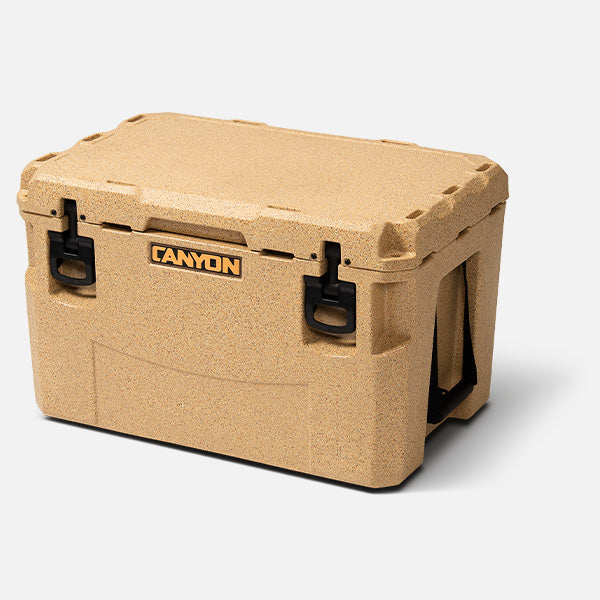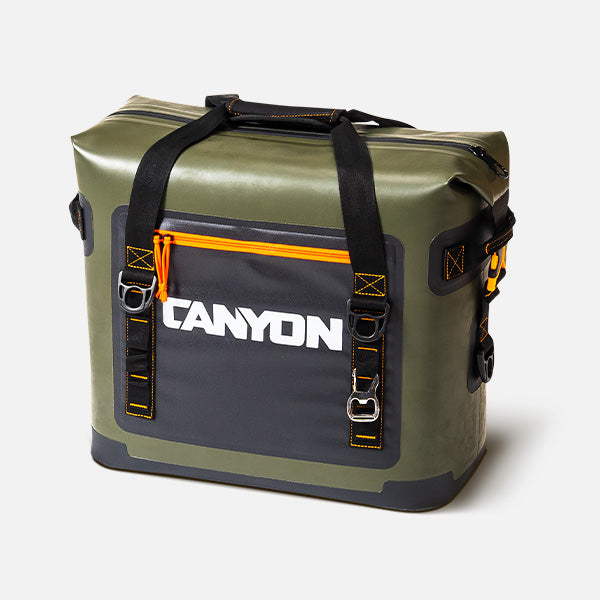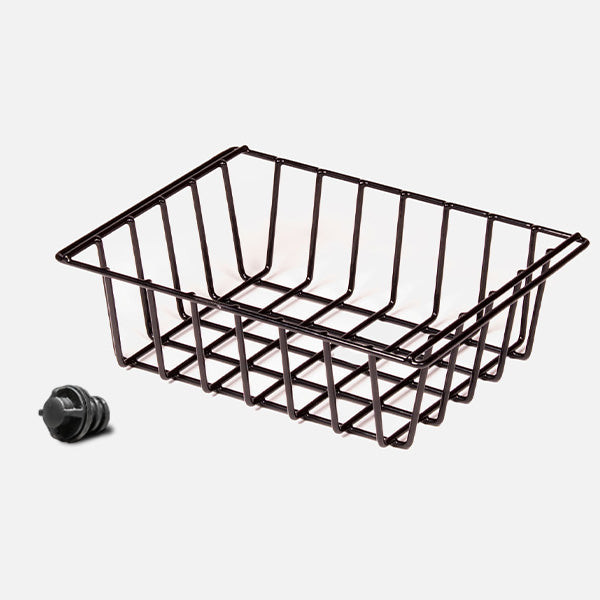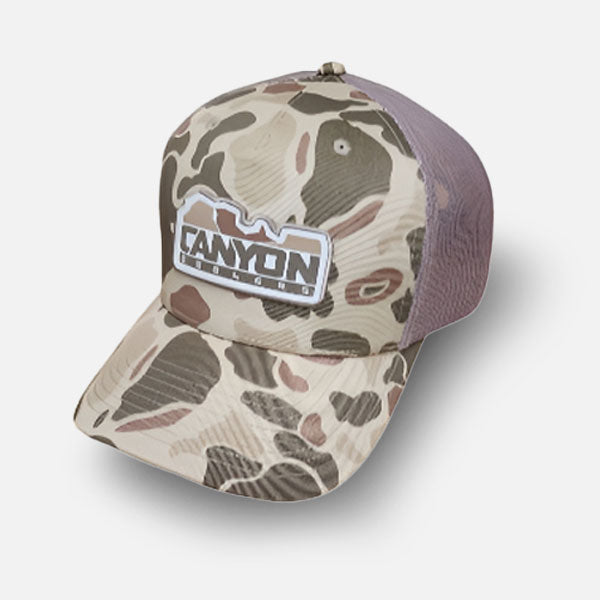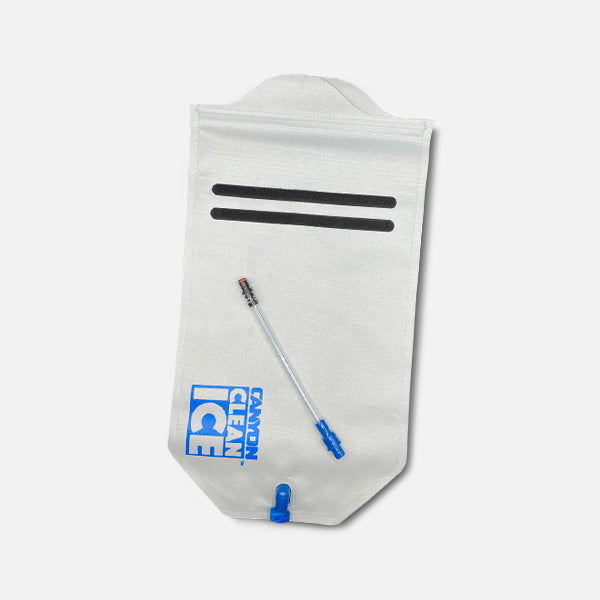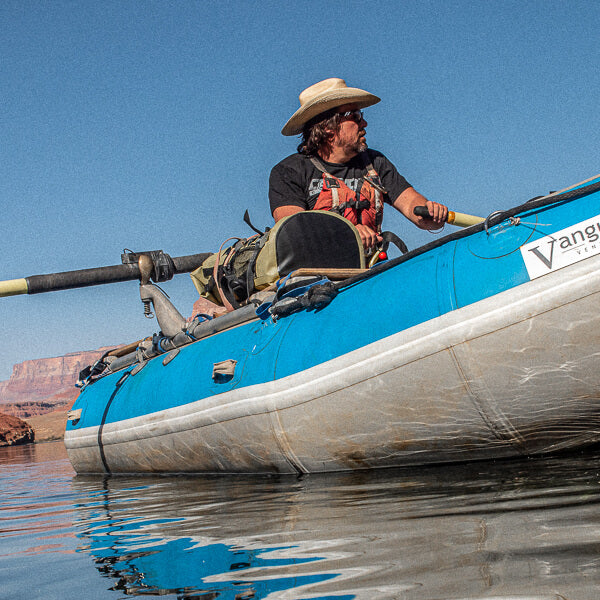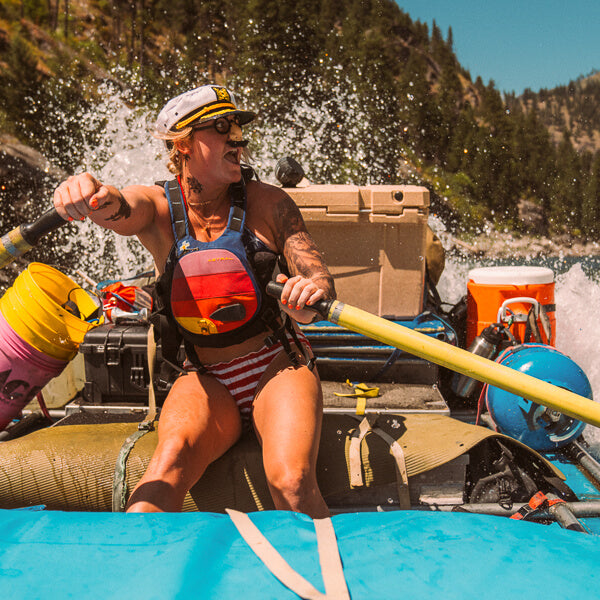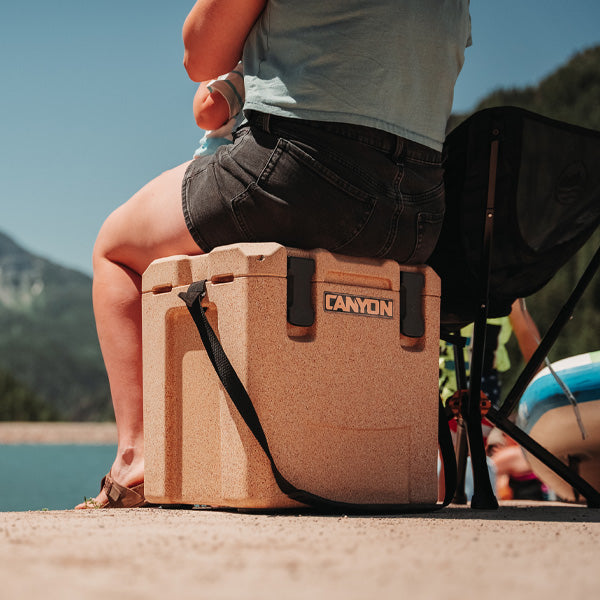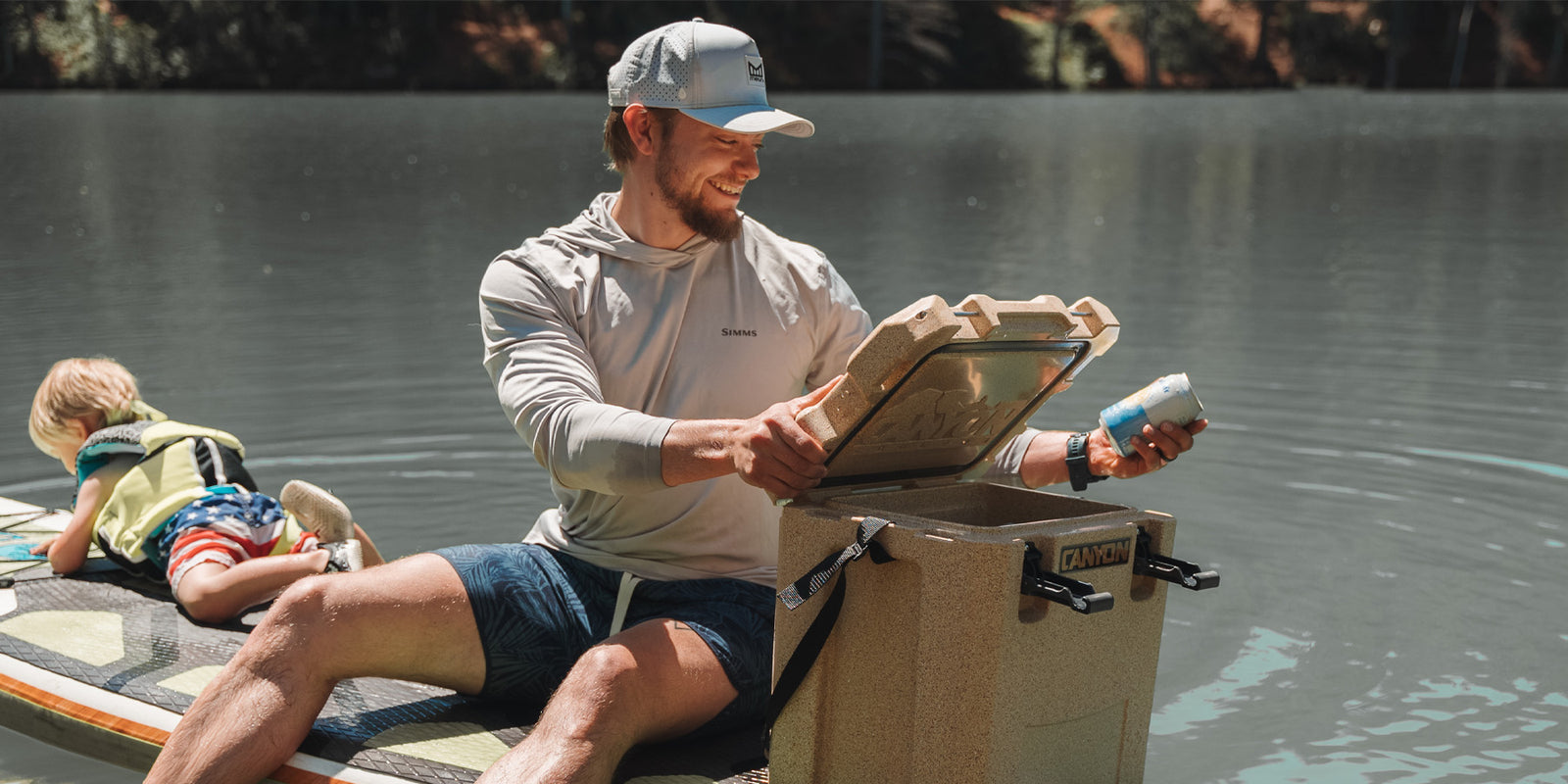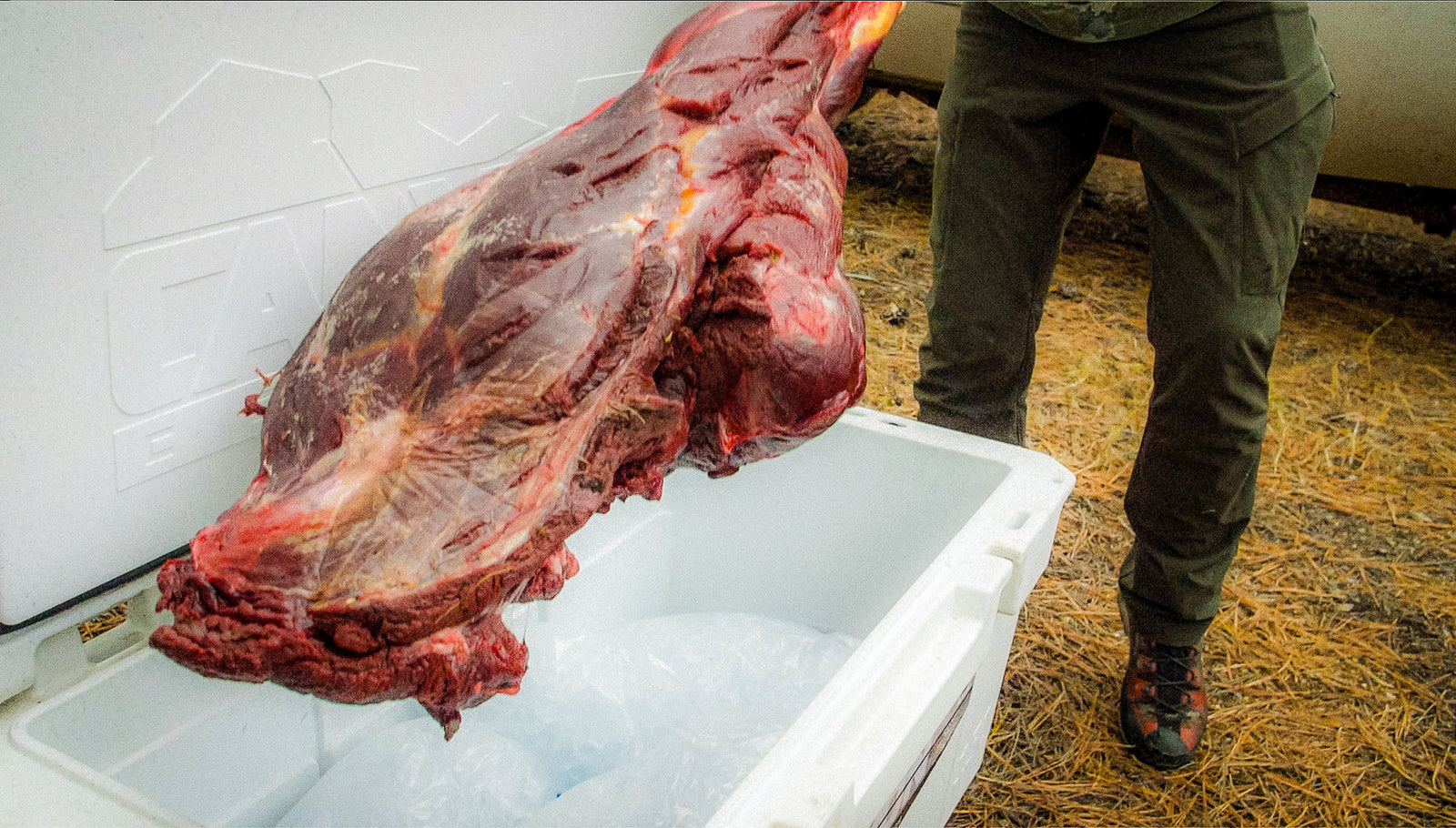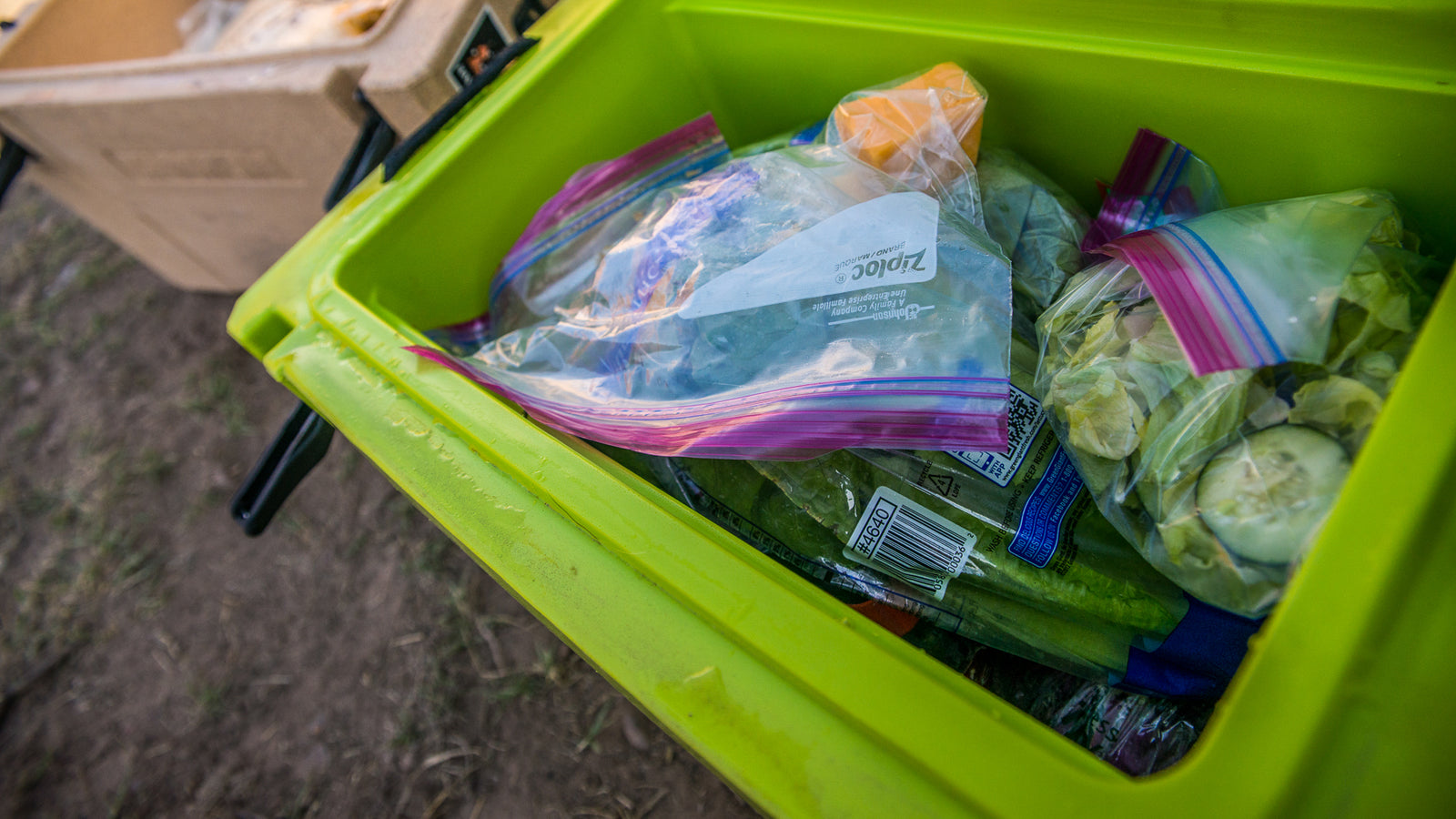Why Use Dry Ice?
For those who need to keep their items extremely cold, dry ice is an excellent choice. It doesn't last longer than regular ice on its own, but it can get things much colder, making it perfect for longer trips or when a larger cooler isn't feasible.
Is Dry Ice Dangerous?
In a word, yes. However, with some caution and preparation, dry ice can be safely used in Canyon Coolers' hard-sided super coolers.
The Dry Facts
- No Melting Mess: Dry ice sublimates, meaning it turns directly from a solid into a gas, leaving no liquid mess behind.
- Significant Expansion: Dry ice expands 2500 times its original size when it transitions from solid to gas, which can displace oxygen—something we need to be mindful of.
- Extreme Cold: Dry ice is around -109.3°F, compared to regular ice which can be up to 31°F, making it 3 to 4 times colder.
- Potential Hazards: Improper use can lead to oxygen displacement, explosions in airtight containers, or frostbite.
Canyon Coolers are designed with tough, kayak-grade plastic and super-insulated walls, making them ideal for keeping dry ice. This ensures your expensive dry ice lasts longer than it would in normal coolers.
Best Practices for Using Dry Ice in Canyon Coolers
- Avoid Pressure Build-Up: Don’t place weight on top of a dry ice-filled cooler. As pressure builds, the cooler needs to ventilate naturally. If unsure, cut a small ¼” gap in the cooler seal or open the drain plug to allow gas to escape.
- No Direct Water Contact: Placing dry ice directly in contact with water causes it to sublimate too quickly, which is both expensive and dangerous.
- Ventilation: When storing a cooler in a car, ensure proper ventilation. Crack or roll down windows if needed to avoid CO2 build-up. If you sense a headache coming on immediately seek fresh air.
- Use Efficiently: A 10-inch/10-pound block of dry ice per 15-inch section of your Canyon Cooler keeps everything frozen for 48 hours or more if following best practices.
- Proper Packing: Pack items to be frozen underneath the dry ice, keeping items you don’t want frozen (like lettuce and soda) above it.
General Safety Tips
- Handling Dry Ice: Always wear heavy, insulated gloves to prevent frostbite. Keep dry ice away from children and pets.
- Ventilation: Ensure the area is well-ventilated to prevent CO2 build-up, especially in low areas or enclosed spaces.
- Recognize Symptoms of CO2 Exposure: Symptoms include headache, dizziness, difficulty breathing, and confusion. Severe exposure can lead to convulsions, coma, or death. Seek fresh air and medical attention if symptoms occur.
Treatment for Dry Ice Exposure
- For Surface Contact: Flush the affected area with generous quantities of cold water. This may sting. Never use dry heat and do not rub frostbitten skin.
- Inhalation Treatment: Move to an area with warm, fresh air. Mild carbon dioxide intoxication can often be remedied by breathing normal air. For severe cases, seek medical attention so professionals can administer proper treatment, such as emergency oxygen.
Conclusion
Dry ice is a powerful tool for keeping items extremely cold and conserving space in your cooler. By understanding and following these safety guidelines, you can enjoy the benefits of dry ice while ensuring a safe adventure. Canyon Coolers, with their durable construction and superior insulation, are the perfect choice for using dry ice effectively and safely.

